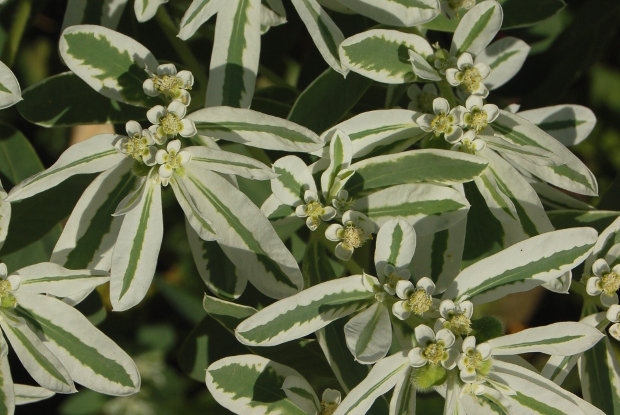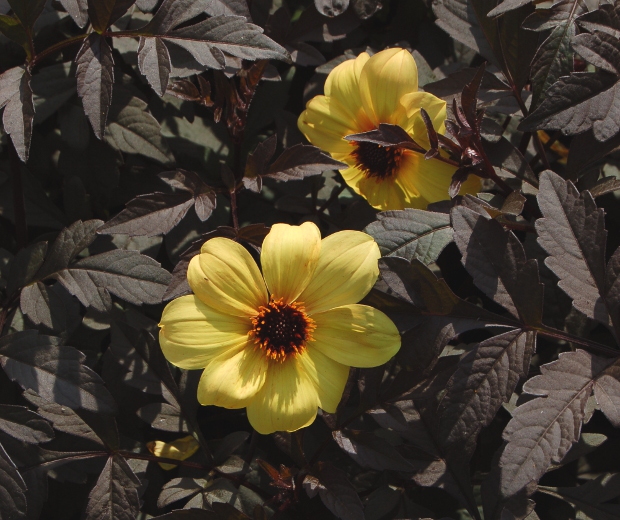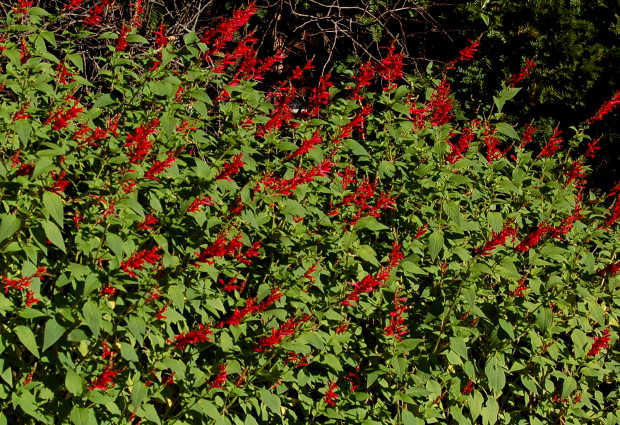Think annuals are just “plant material,” plunked down for June to September color? Think again. Some annuals may not bloom all summer, but they do offer something unique at a specific time of the year.
Don’t hate them because they’re not petunias! They make their season special.
With all the zinnias and lantanas, sunflowers and cannas in the garden in August and September, there is no shortage of fiery colors. Thank goodness for snow-on-the-mountain (Euphorbia marginata) to cool things down.
Beginning life as a seafoam-green seedling, the plant develops bracts in late summer as white as freshly laundered linens. The actual, minute flowers are hard to see, but are shaped like butterflies with wings laid flat.
Native to the states west of the Mississippi, it not surprisingly likes sun and a soil on the dry side. It usually stands about 2 1/2 feet tall.

I grew moonflower vine (Ipomoea alba) one year, a sweet potato and morning glory cousin, and have meant to do it again ever since and have never followed through. I’ve regretted it each year.
Seeds must be sown at just the right time, as the plant wants nothing to do with chilly weather, but takes 16 warm weeks to flower from seed. And it dislikes transplanting. In my one success, I sowed seeds in situ around Mother’s Day, and the plants began to flower in the second week of September.
Looking like big, frosty-white morning glories, they swirled open not in the a.m., but at dusk, and poured forth a heady perfume. They were glorious.
Dahlias can bloom for four months, beginning as early as the first day of summer, but they don’t really get going until September, and they peak at the end of that month.
The gardening world is gaga these days about a (patented) line of dahlias that go by the name Mystic. All feature single flowers in colors that pop against nearly black foliage. Mystic Illusion (‘Knockout’) is lemon yellow, which is about as strong a contrast as can be imagined against mahogany leaves.
The folks at the Cincinnati Zoo and Botanical Garden–or as we horticulture people call it, the Cincinnati Botanical Garden (and zoo), are so smitten with it that they consider it possibly their favorite annual of all time. Check out all of the zoo’s other top picks here.
Many salvias, too, have long bloom times, but don’t truly hit their stride until late in the season. A couple of them don’t do much at all until October, at least in the Lower Midwest, but are worth the wait.
Mexican bush sage (Salvia leucantha) has pettable, downy-soft purple and white flowers held in rows on 3- to 4-foot stems.
When backed by a wall or other shrubbery, the spikes all face forward, as if they were an audience riveted on the spectacle in front of them. The bicolor blooms make a nice counterpoint to sunset-colored autumn leaves falling at their feet.
Another tender salvia, Salvia elegans (pineapple sage), is strokable for a different reason. When rubbed, its leaves smell like Juicy Fruit gum. Its brake-light-red flowers are rather sparsely set, but it is such a joy to see fresh flowers of any sort in the month of October.
Pineapple sage seems like the sort of flower the hummingbirds would love, but the last hummingbird bus departs at the end of September, so alas, they don’t get to partake. The flowers are tasty to human pallettes and can be added to salads, salsas, cakes, and teas.






Amy,
The Mexican bush sage and pineapple sage have been favorites of mine since growing them back in my greenhouse days. The late season wonders are too often forgotten. Great post!
Brian
Thanks, Brian! You probably recognize this stand of S. elegans–I took this pic (and the dahlia) at Spring Grove. I probably wouldn’t have known about that plant otherwise.
I may have to add Euphorbia marginata to my seed list this year. I’ve been passing it over for enough years !
Linda, It is slow to germinate, so be prepared for it to take a while. It seems to sprout faster if direct-sown in fall or late winter, like poppies.
Nice to see some of the showy annuals be given their due. There are lots of them, and they can fill in in beds that are new and thus sparse.
And if you don’t like something, you try a different one next year. There are so many interesting ones to try from seed catalogs and seed exchanges. Annuals are so much more than petunias and marigolds.